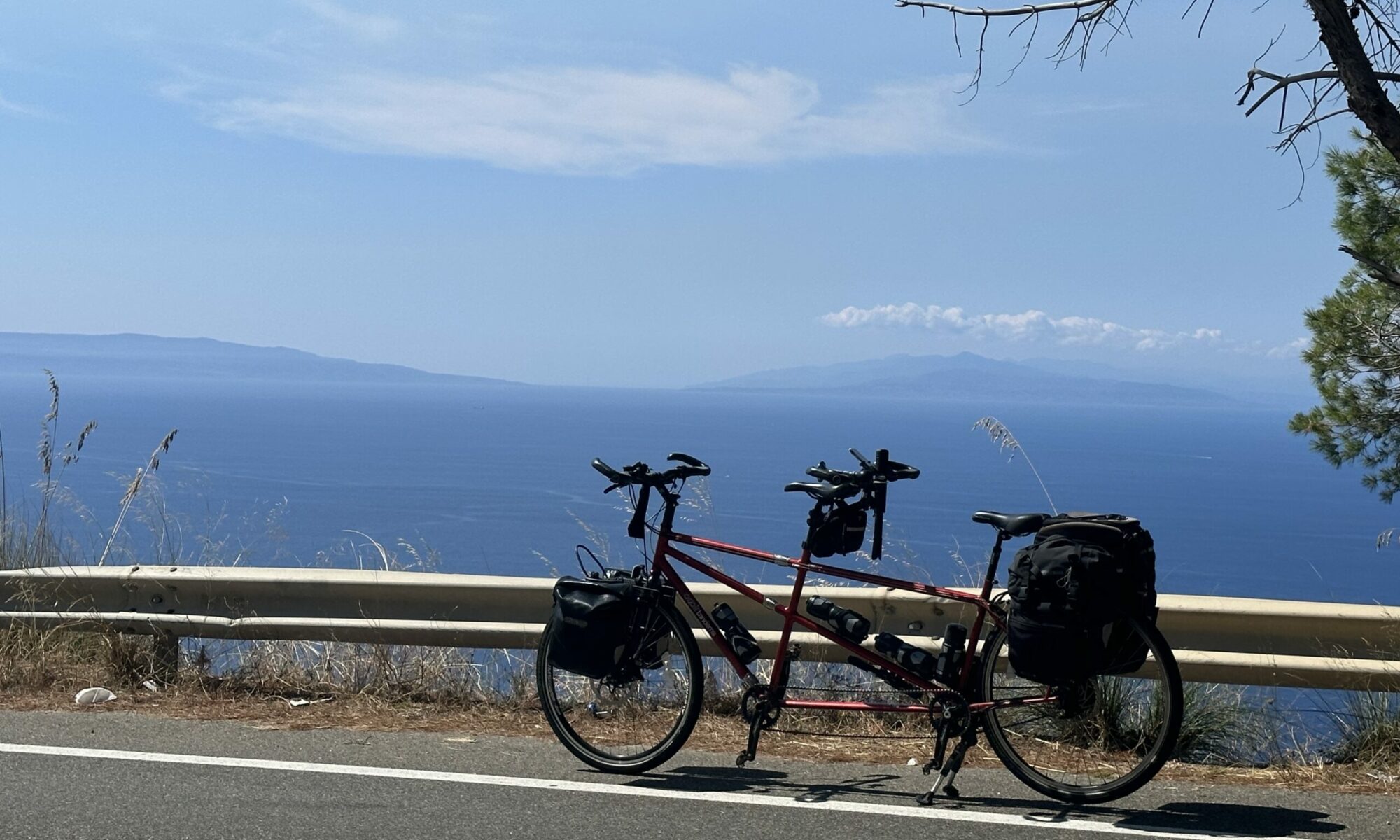Distance: 46 km
Time: 2 hours 11 minutes
Speed: 21 km/h
Ascent: 122 metres
Total distance: 1712.5 km
Total time: 91 hours 6 minutes
Wordle scores: Captain 4, Stoker 3
Word of the day: “saracena” (sah-rah-chay-nah) – Saracen
The Stoker writes:
We both really enjoyed our return to Lecce. The apartment we’d taken was just outside the centro storico, we walked in well in advance of dinner for a good wander round. Last time we were here it was October and raining – last night it was still pretty warm at 6pm, and the streets were incredibly busy.
As the Captain mentioned yesterday, Lecce is known for its Baroque architecture. Some of the monuments and buildings were undergoing restoration or maintenance, which was a shame, but it’s important that they preserve them for future generations, of course.
Here’s a selection of pictures:
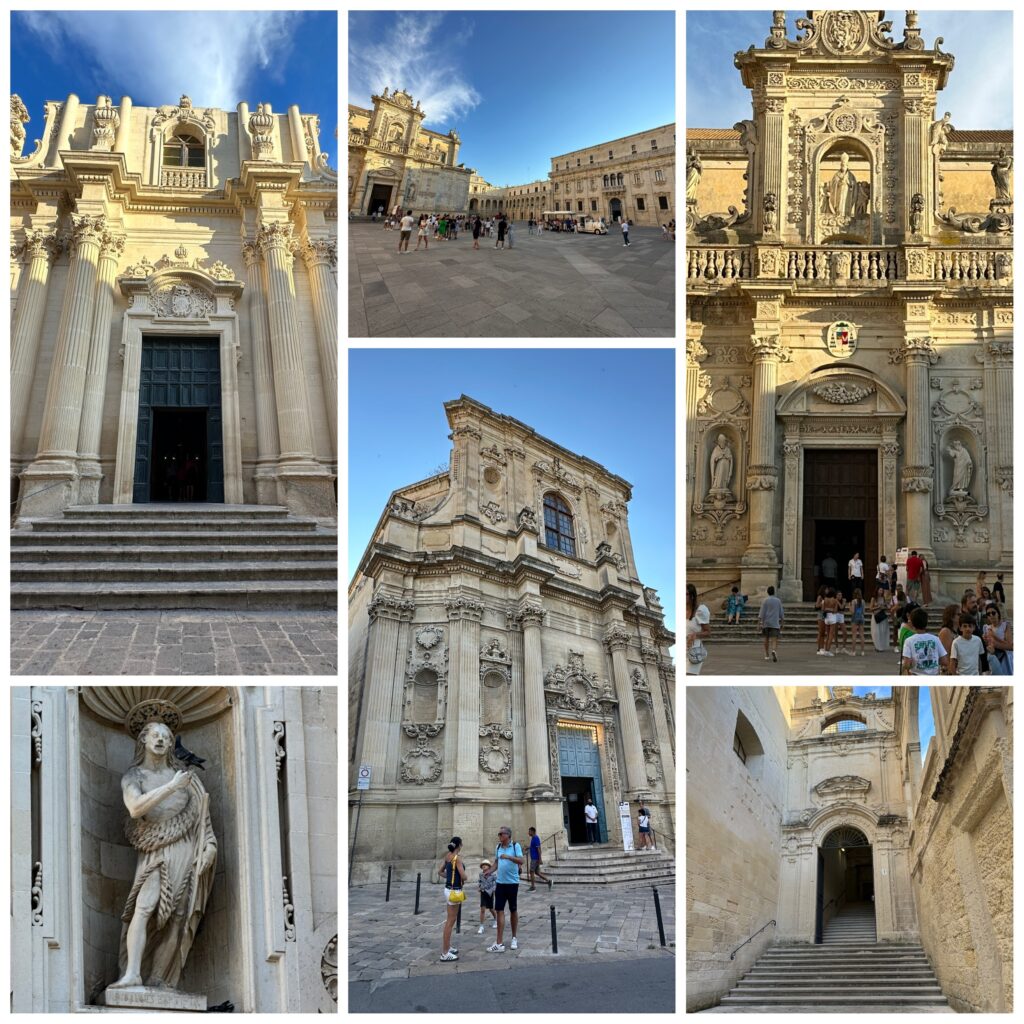
There are also two Roman amphitheatres in Lecce, by way of a contrast!
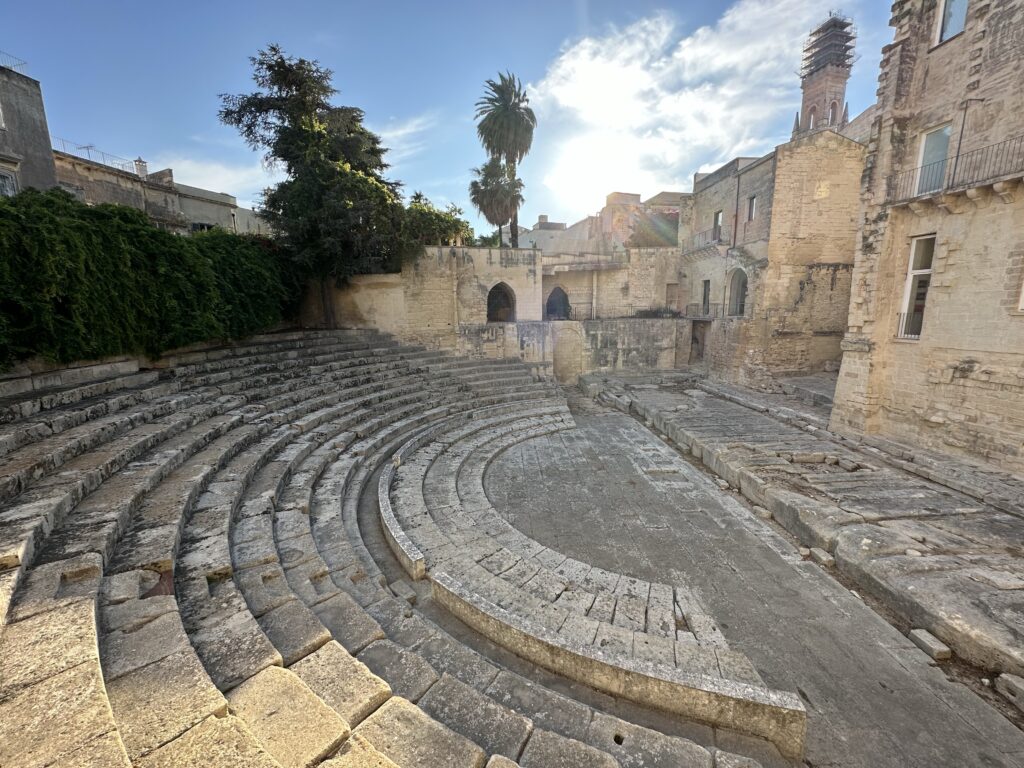
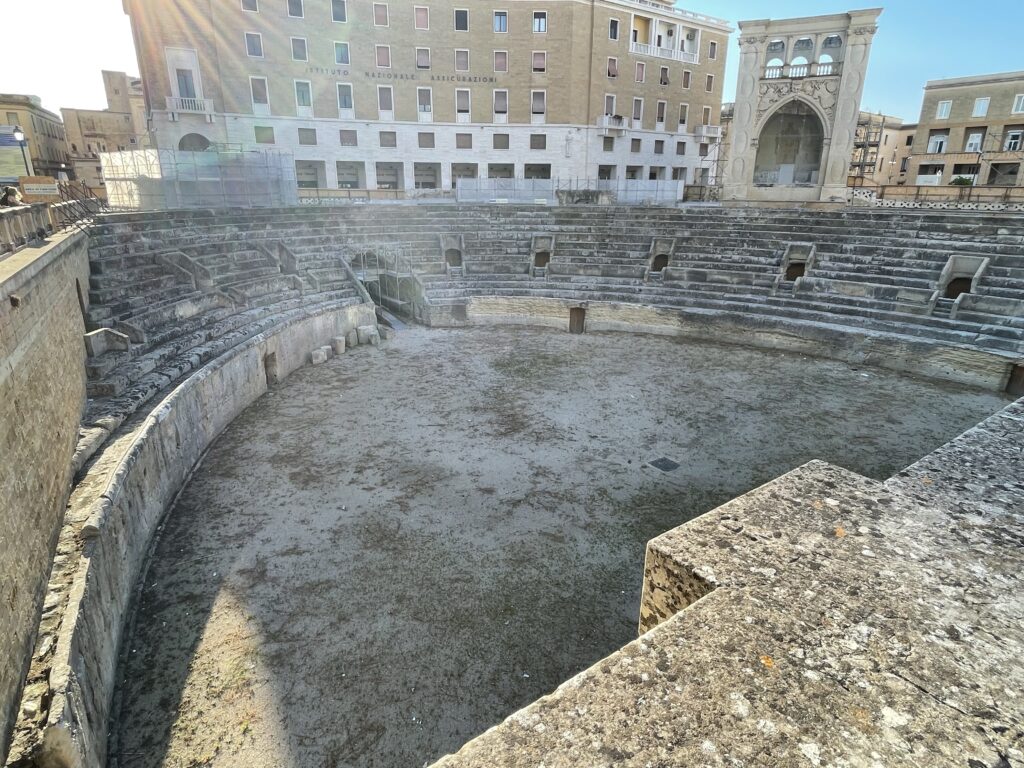
Last time we came here, the sudden switch to Baroque was quite a shock, we’d come from Matera in a car. This time we are travelling much more slowly, of course, and had started to see scrolls, columns and pot-bellied cherubs even in Ostuni, two nights ago. One of the features of a tour by bicycle is that the scenery, vernacular and food all change quite subtly as you go along, moving as you are quite slowly through the country. You’ll just get used to a particularly delicious pasta dish, for example, then suddenly, nope, not round here….!
We chose a restaurant serving Puglian specialities for dinner, and had a very good, if ridiculously enormous meal. We walked back to our apartment in the dark, giving us an opportunity to see the buildings in their illuminated state.
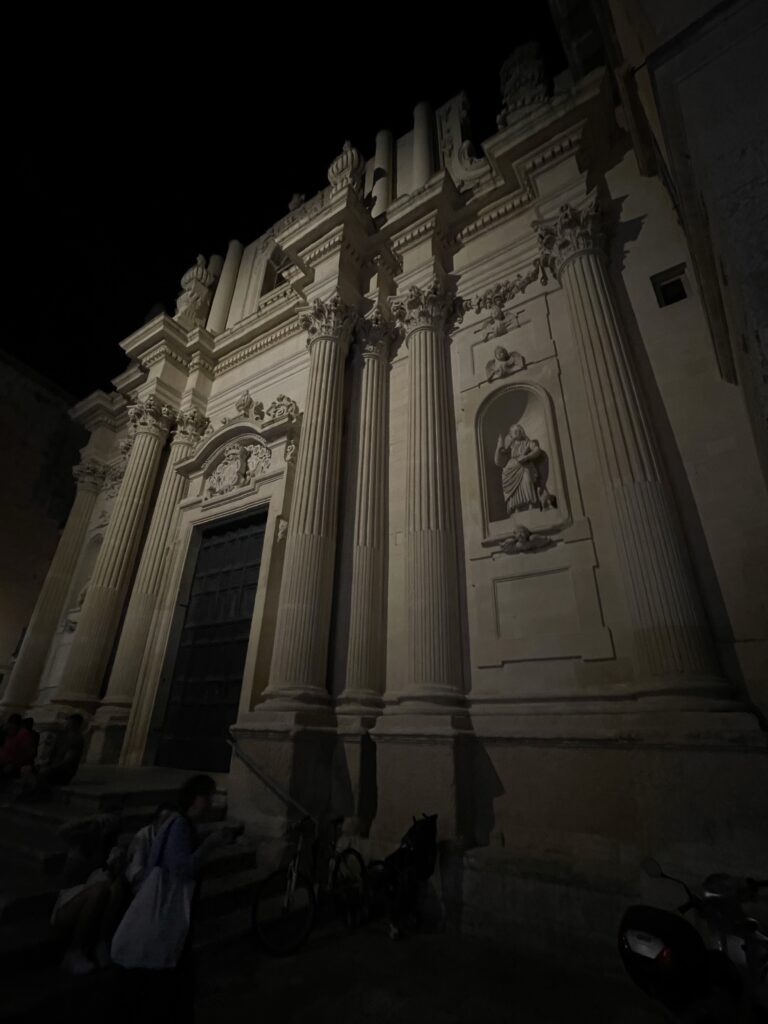
The Palazzo del Duomo was particularly striking.
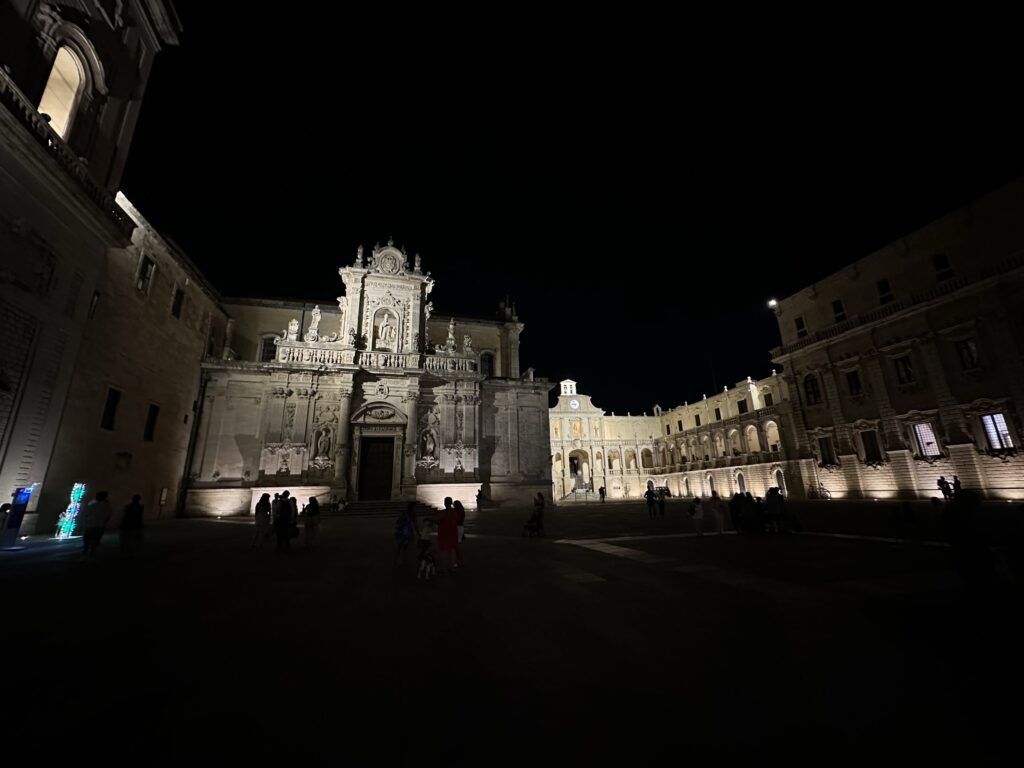
Our hosts had given us the option to check out whenever we wanted to, as their next guests weren’t coming in until the following day, and so without an alarm we didn’t wake up until 8:30. Probably still digesting the enormo-dinner! We had some tea and perused today’s route, mainly because I wanted to ride out of the city through one of its ancient walled gates. The proposed route had a long, very straight section at the end into Otranto, which didn’t look very interesting. Strangely, though, when I added in the Porta San Biagio, it suddenly switched us to a much better looking route along the coast, past lots of places called Torre something-or-other. Defences against the Saracens again! It looked good, so we instructed Gilbert to do the new route, and rode into town for a quick breakfast.
The gate was quite impressive!
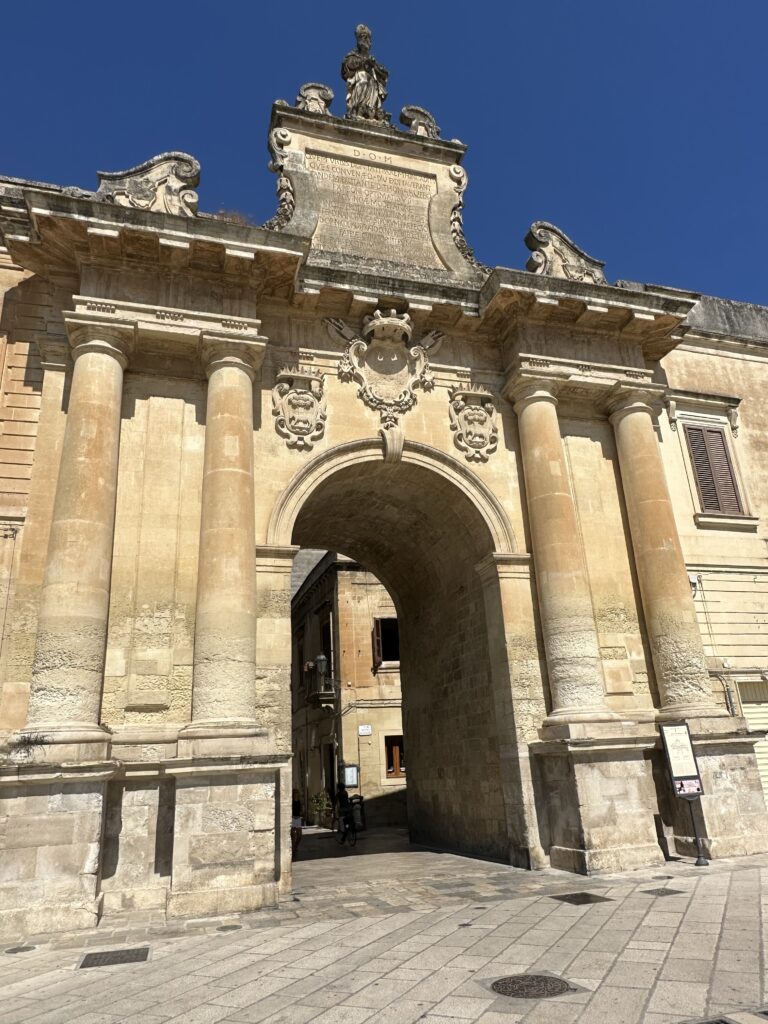
There was the usual sense, on leaving the ancient centre of a city, of rejoining the modern world with a jolt, and off we pedalled, to find our coastal road.
We rode through olive groves (I don’t think I’ll ever tire of it), some looking ancient and unloved…
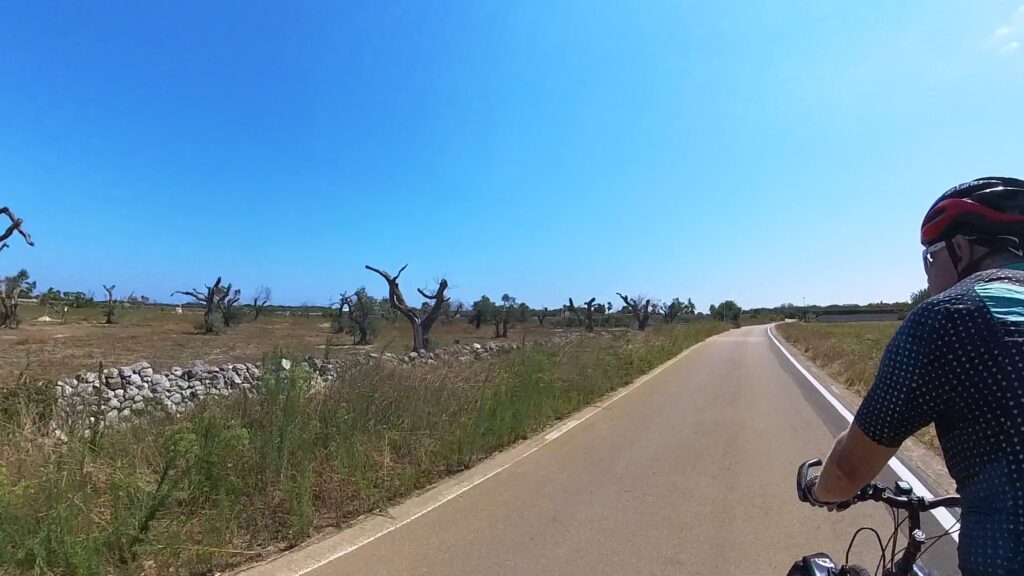
… and some very newly planted.
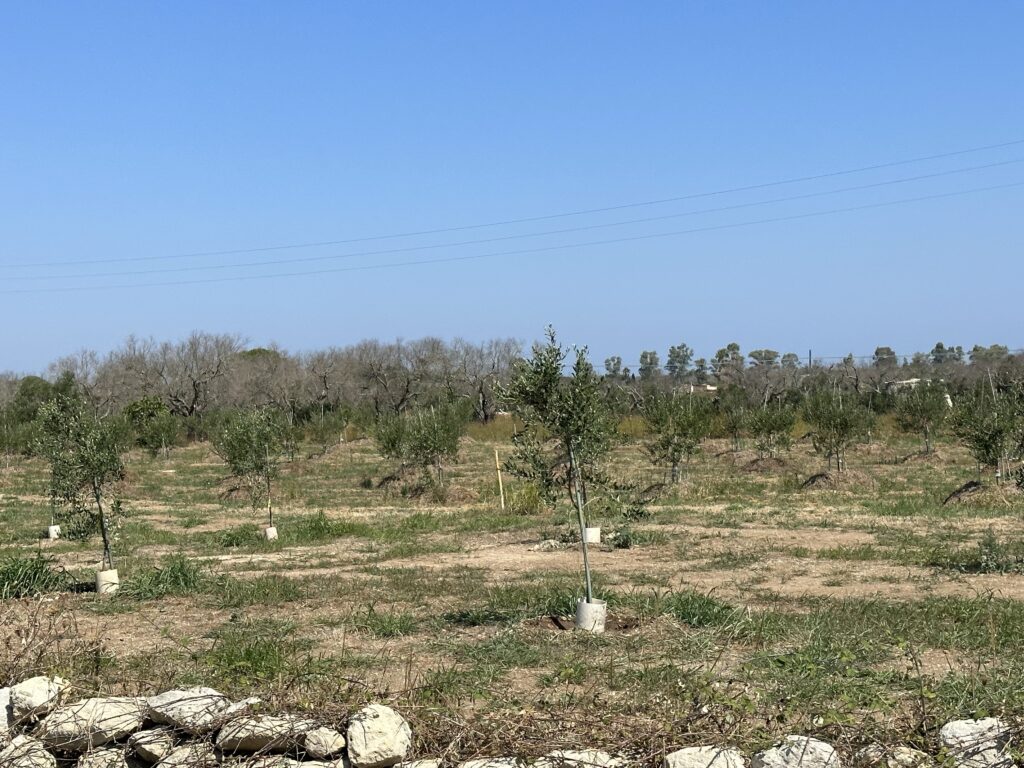
It occurred to me that whoever planted these olive trees would never taste the oil they will produce in their maturity. That reminded me of that saying about old men planting trees. As I was trying to remember it, and to remember who said it (it’s an old Greek proverb, apparently: “A society grows great when old men plant trees whose shade they know they shall never sit in”), there he was, an old man, tending the young olive trees, whose oil will be enjoyed by people in decades, if not centuries, rather than by himself.
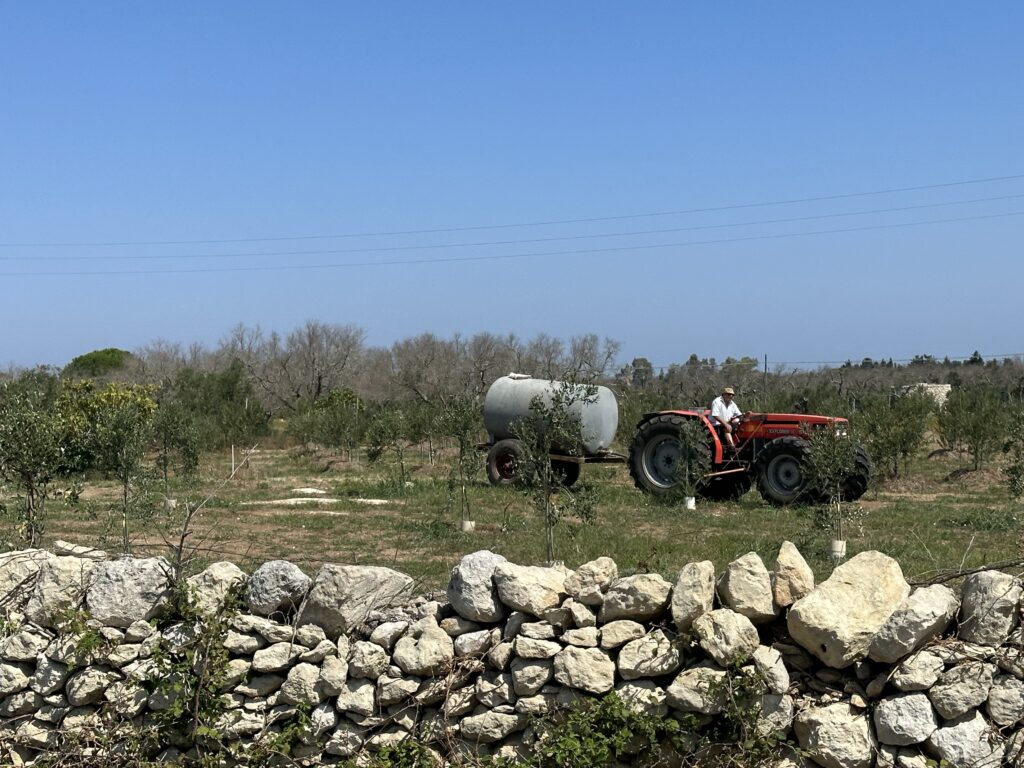
Just a sec, got something in my eye…. *sniffs*
We pedalled on. It was a lovely route, very peaceful, easy cycling, taking us ever nearer the coast. And then there it was.
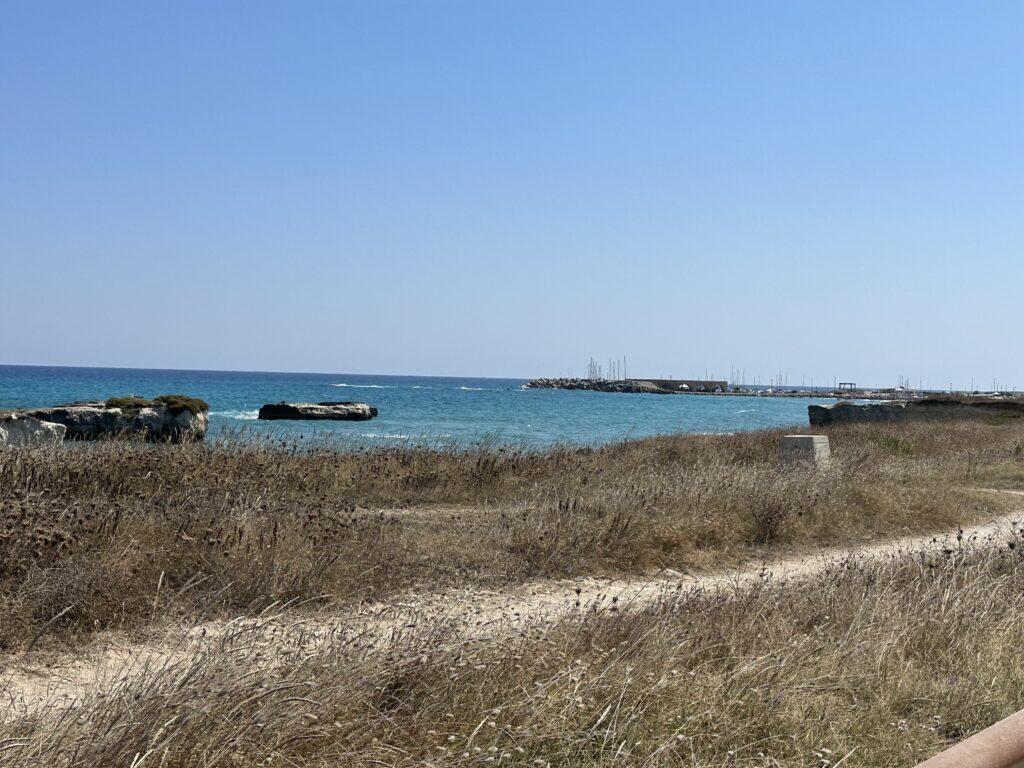
We enjoyed the road along the coast, spotting the defensive towers, and navigating around the drivers looking for a parking space along the beach for their visit. Of course, it’s a Saturday! That’s another feature of a long tour – you never know what day of the week it is!
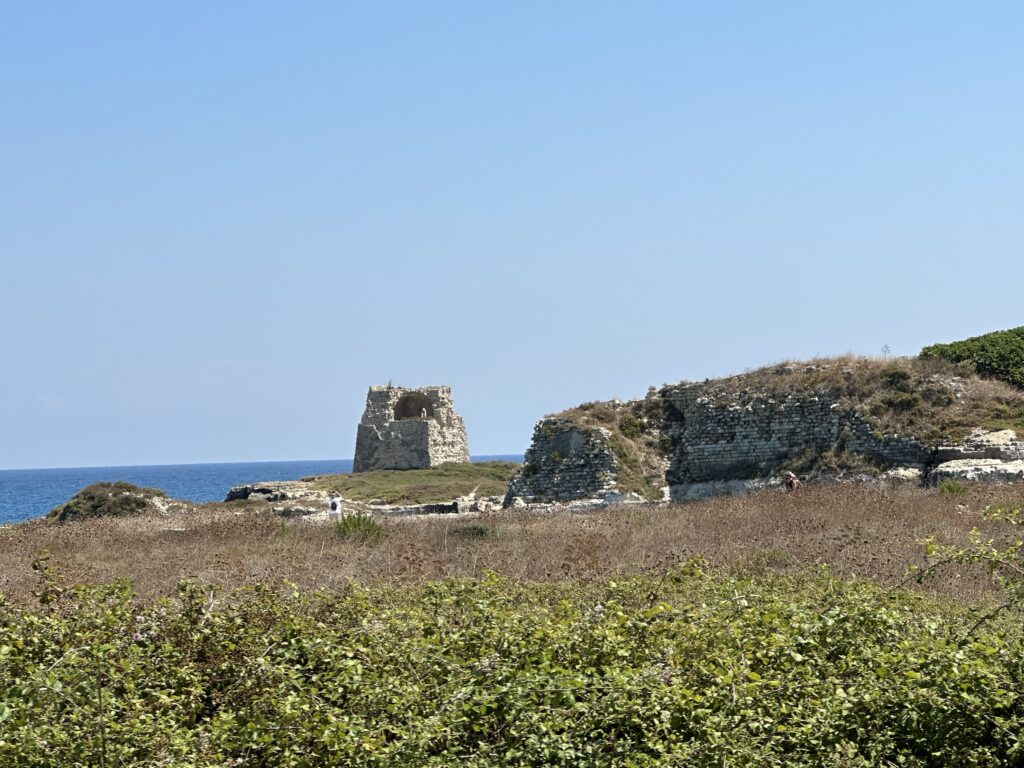
We stopped for water at Torre San Foca, where the tower is now used by the coastguard.
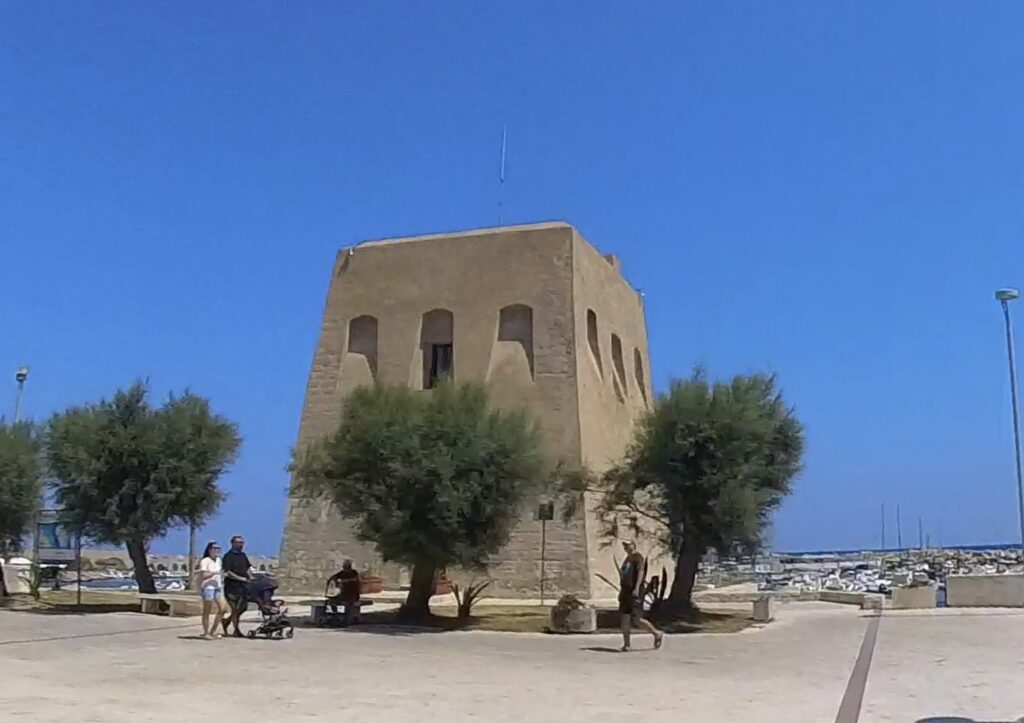
Towards Otranto we passed the Laghi Alimini, two lakes which disgorge into the sea. The Captain was briefly excited by the term ‘alimini’, assuming it to be connected to the bauxite caves near Otranto, bauxite being aluminium ore. It turns out, though, that the lakes are named for the Ancient Greek word ‘limne’, which just means ‘lake’! 🤨
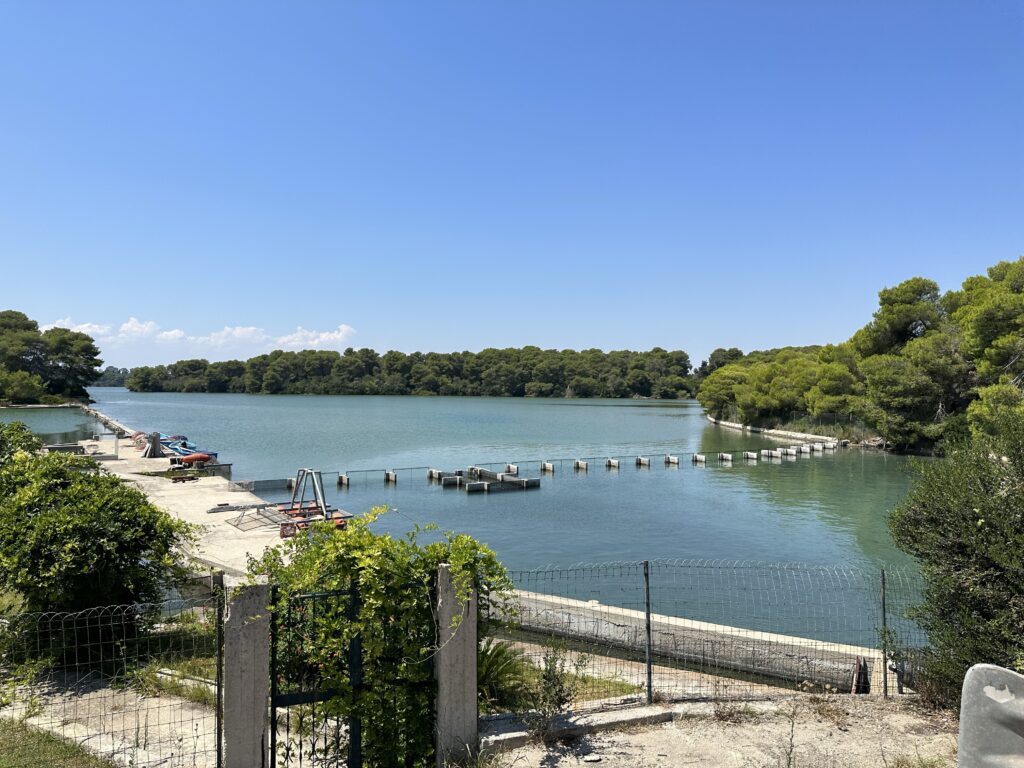
A last push into town, past the Aragonese castle…
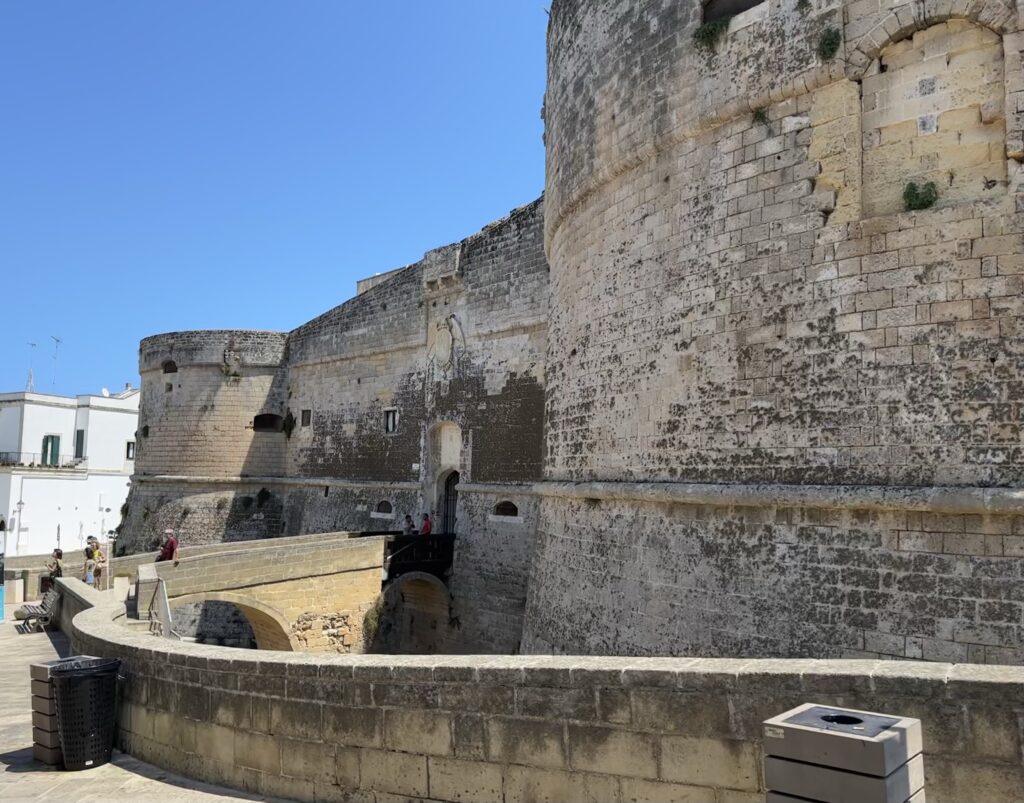
… a wheel along some tiny alleyways…
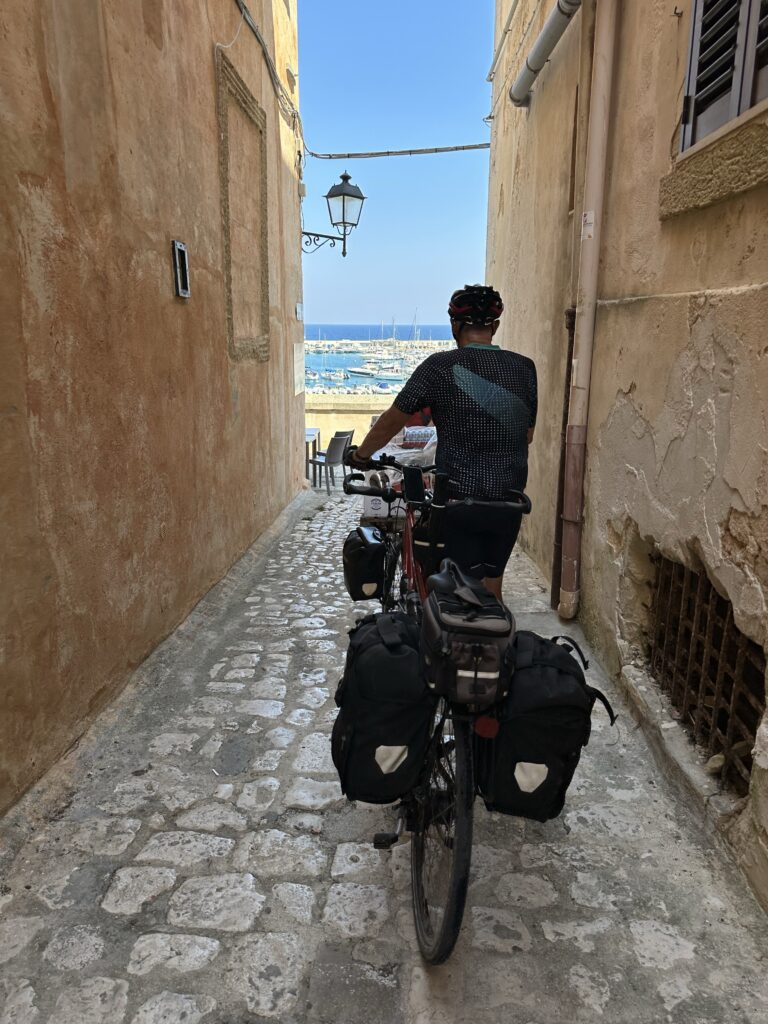
… and suddenly the harbour of Otranto’s old town was glittering away in front of us in the sunlight.
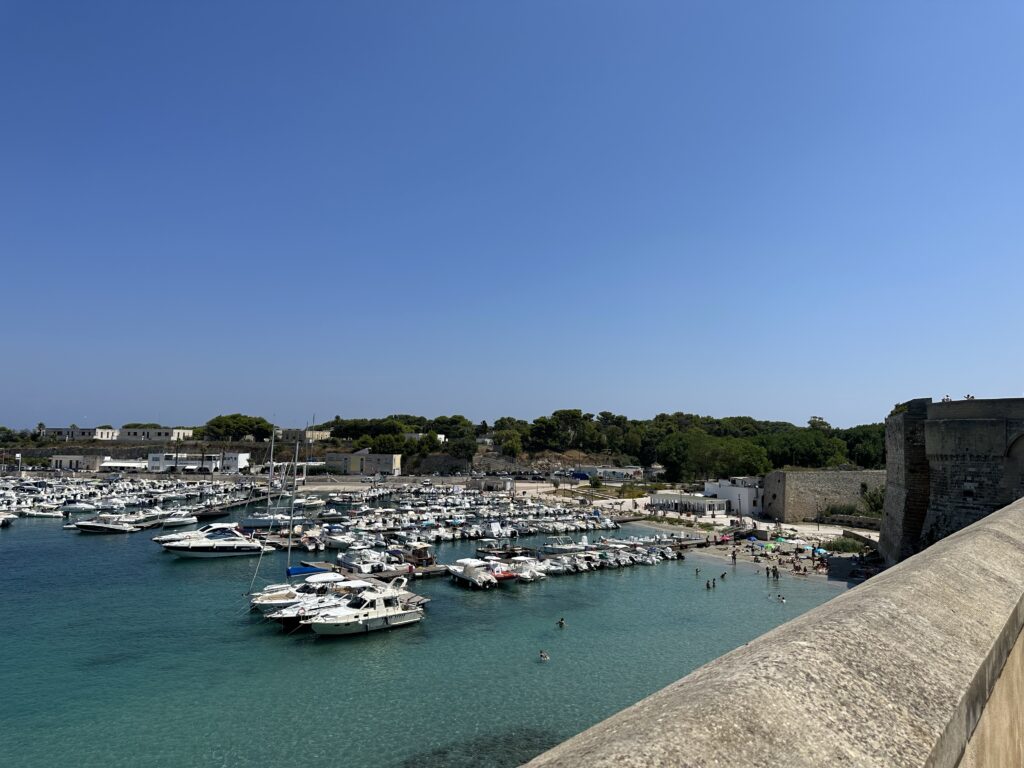
We’re settled into a lovely hotel now, whose breakfast terrace looks over the harbour. Tomorrow we will ride to Santa Maria di Leuca, whose pronunciation we have mastered just in time. Lay-ooh-kah. It’s as far south as we can go in the heel. The end of the Adriatic coast. Quite the milestone!
Here’s today’s route and a short video
